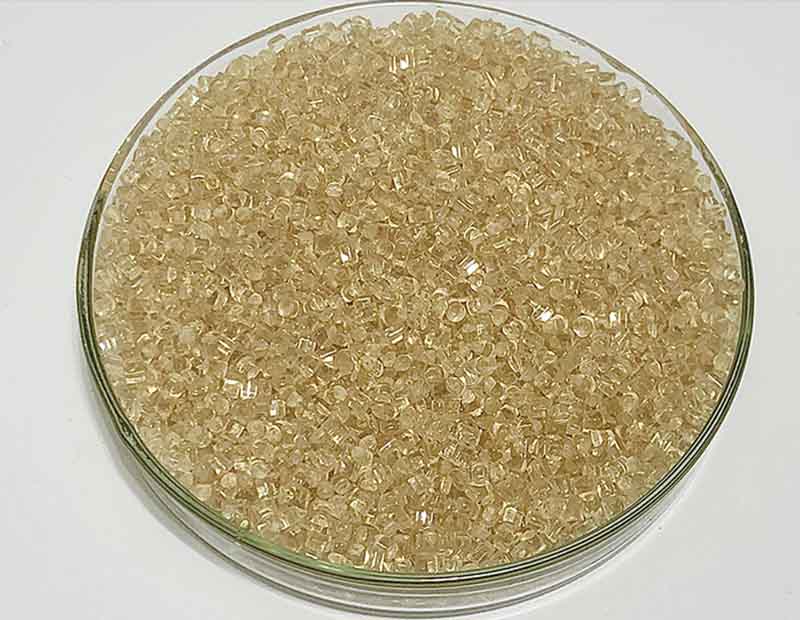Polyethersulfone (PES) is a High-performance thermoplastic resin belonging to the Polysulfone family, renowned for its exceptional thermal stability, mechanical strength, and chemical resistance. This engineering plastic exhibits a unique combination of properties that make it suitable for demanding applications across various industries.

Key Characteristics of PES Resin
Thermal Stability: PES maintains dimensional stability up to 200°C (392°F) with a glass transition temperature (Tg) of 220°C (428°F). Its heat deflection temperature (HDT) at 1.82 MPa reaches 203°C (397°F), outperforming many engineering plastics.
Mechanical Properties: With a tensile strength of 84 MPa (12,200 psi) and flexural modulus of 2.6 GPa (377,000 psi), PES demonstrates excellent load-bearing capacity. Its elongation at break ranges from 40-80%, indicating good toughness.
Chemical Resistance: PES exhibits outstanding resistance to most acids, alkalis, and organic solvents (pH range 2-13), though it is susceptible to certain polar solvents like acetone and chlorinated hydrocarbons.
Electrical Properties: The dielectric strength measures 16 kV/mm with a volume resistivity of 1016 Ω·cm, making it suitable for electrical applications.
Optical Clarity: PES offers 88% light transmission with a refractive index of 1.65, providing glass-like transparency in many formulations.
Flame Resistance: Naturally UL94 V-0 rated (1.5mm thickness) without additives, with a limiting oxygen index (LOI) of 38%.
Applications of PES Resin
The unique property profile of PES resin enables its use in critical applications where performance under extreme conditions is required:
Medical and Healthcare
PES is widely used in medical devices due to its biocompatibility (ISO 10993 compliant), sterilizability (withstands over 1,000 steam sterilization cycles at 134°C), and transparency. Applications include:
Surgical instrument components
Hemodialysis membranes (0.2-0.5μm pore size)
Drug delivery systems
Medical filtration devices (0.1-10μm filtration range)
Aerospace and Transportation
In aerospace applications, PES meets demanding requirements with its flame-smoke-toxicity (FST) compliance and high strength-to-weight ratio:
Aircraft interior components (meeting FAR 25.853 standards)
Electrical connectors and insulators
Fuel system components
Food Service and Water Treatment
PES's FDA compliance and hydrolysis resistance make it ideal for:
Commercial coffee makers and steam tables
Water filtration membranes (operating at 80°C continuously)
Food processing equipment components
Electronics and Electrical
The material's dielectric properties support applications such as:
PCB substrates (CTE of 55 ppm/°C)
High-temperature connectors
Insulating films (12-250μm thickness range)
Maintenance and Care of PES Products
Proper maintenance ensures optimal performance and longevity of PES components:
Cleaning Procedures
For routine cleaning of PES components:
Use mild detergents (pH 5-9) at temperatures below 80°C (176°F)
Avoid abrasive cleaners that may scratch surfaces (keep roughness average (Ra) below 0.8μm)
For sterilization, autoclave at 121-134°C (250-273°F) for 20-30 minutes
Storage Conditions
To prevent property degradation:
Store in UV-protected environments (below 50 klux exposure)
Maintain relative humidity below 60% to prevent moisture absorption (equilibrium moisture content: 0.6-0.8%)
Keep away from strong oxidizing agents and polar solvents
Mechanical Maintenance
For moving parts containing PES:
Apply silicone-based lubricants (viscosity 50-100 cSt) for reduced friction (coefficient of friction: 0.35-0.45)
Monitor wear surfaces; replace when wear exceeds 0.5mm depth
Avoid sudden impact loads above 50 Joules
Inspection Protocols
Regular inspections should include:
Visual checks for stress whitening (indicator of microcracking)
Dimensional verification (tolerances typically ±0.3%)
Surface roughness measurements (maintain Ra < 1.6μm for sealing surfaces)






